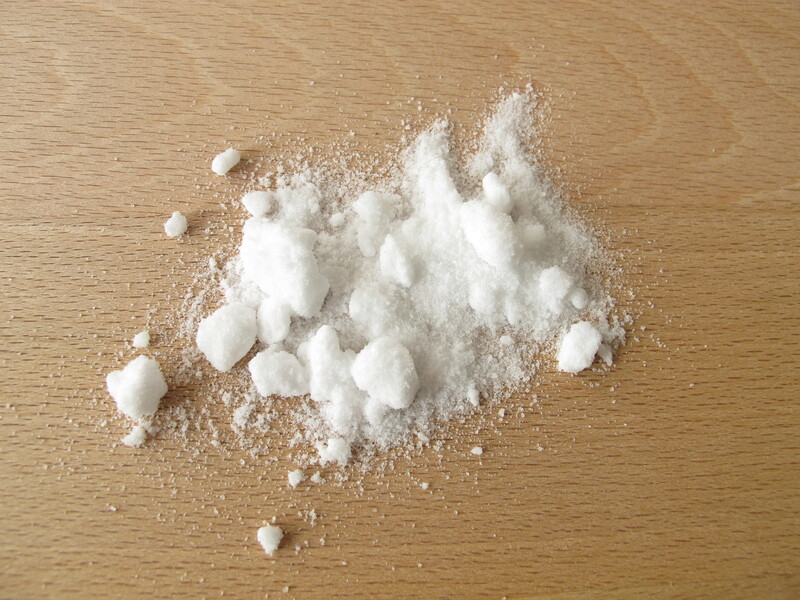How Air Quality Directly Affects Your Home's Atmosphere
Posted on 19/08/2025
How Air Quality Directly Affects Your Home's Atmosphere
High-quality indoor air is fundamental to maintaining a healthy, comfortable, and inviting home environment. As we spend a substantial amount of our lives indoors, the air quality in your home can dramatically influence your overall well-being, mood, and even the preservation of your living space. In this comprehensive guide, we'll uncover how air quality directly affects your home's atmosphere, explore the sources of indoor pollution, and provide actionable tips for maintaining fresh air at home.
Understanding Indoor Air Quality: What Does It Mean?
Indoor Air Quality (IAQ) refers to the condition of the air within and around buildings--especially as it relates to the health and comfort of inhabitants. Good IAQ pertains to air that is free from excessive dust, allergens, chemicals, and other pollutants. Poor air quality at home can arise from a multitude of sources and has immediate and long-term effects on both people and property.
Key Components of Air Quality in Your Home
- Particulate Matter (PM): Tiny particles like dust, pollen, pet dander, and smoke that can accumulate indoors.
- Volatile Organic Compounds (VOCs): Gases emitted by cleaning products, paints, furniture, and more.
- Humidity Levels: Too much or too little moisture in the air impacts comfort and can foster mold growth or cause dryness.
- Carbon Monoxide and Dioxide: Gases which, in high concentrations, pose serious health risks.
- Biological Contaminants: Mold spores, bacteria, viruses, and other organisms that thrive in stagnant air.

How Home Air Quality Directly Impacts the Atmosphere
While atmospheric air quality might seem out of sight and mind, its impact is continuous and pervasive. How does indoor air quality alter your home's atmosphere? Let's break it down into several crucial aspects:
1. Physical Health of Occupants
Poor air quality can lead to headaches, fatigue, allergies, asthma attacks, and even more serious respiratory issues. Children and the elderly are particularly susceptible. Clean home air ensures that your living space is truly a refuge, not a risk.
2. The Ambiance of Your Home
- Odors: Musty smells or chemical odors can tarnish the welcoming vibe of your space.
- Humidity: Excess moisture can make your atmosphere feel sticky and cause discomfort, while dry air contributes to static, dry skin, and respiratory discomfort.
- Visibility: Dust and particulates can reduce clarity and make surfaces and air appear unclean.
3. The Health of Your Home's Structure
Subpar air quality can promote mold growth, accelerate paint and fabric deterioration, and encourage dust buildup in HVAC systems. Over time, these factors can lead to costly repairs and health hazards for occupants.
4. Energy Efficiency and Maintenance
When air filters and vents are clogged with particulates, appliances like air conditioners and heaters have to work harder. Good air quality at home means lower energy bills and much less frequent repair calls.
Common Sources of Poor Air Quality in Homes
Knowing what causes changes in home air quality is the first step in mitigating any issues. Here are typical contributors:
- Dust and Allergens: Accumulate from people, pets, textiles, and open windows.
- Mold and Mildew: Thrive in damp places like basements, bathrooms, and kitchens.
- Household Products: Cleaning supplies, paint, and new furniture release VOCs.
- Tobacco Smoke: Among the most harmful pollutants for indoor air.
- Poor Ventilation: Allows contaminants to build up over time.
- Pet Dander and Fur: Even well-groomed pets contribute allergens to the environment.
Detecting Subpar Air Quality at Home
Symptoms to Watch For
- Coughing, sneezing, or allergy flare-ups that improve when leaving the house.
- Unpleasant or persistent odors that don't clear with cleaning or ventilation.
- Mold spots on walls, ceilings, or around windows.
- Condensation on windows and cold surfaces.
- Increased dust accumulation, even shortly after cleaning.
- Family members with new or worsening respiratory symptoms.
Real-Life Consequences of Poor Indoor Air Quality
For families across the world, the quality of home air is not just a comfort issue--it is a foundational health and lifestyle concern. Some documented impacts include:
- Increased Asthma and Allergy Incidence: The EPA reports that indoor pollutants can trigger or worsen asthma and allergy symptoms, especially in children.
- Frequent Illness and Fatigue: Poor IAQ can lead to more sick days, headaches, and lingering tiredness.
- Chronic Respiratory Issues: Long-term exposure to poor home air can contribute to bronchitis, pneumonia, and other disorders.
- Mental Clarity and Mood: Studies suggest clean air contributes to sharper thinking and reduced risk of depression.
Improving Your Home's Atmosphere: Proven Steps
The good news: enhancing your home's atmosphere by improving air quality can be straightforward and cost-effective. Here's how:
1. Increase Ventilation
- Open Windows: Allow fresh air to circulate and dilute indoor pollutants.
- Use Exhaust Fans: Especially in kitchens, bathrooms, and laundry rooms.
- Consider HRV or ERV Systems: Modern homes can benefit from heat or energy recovery ventilators for continuous fresh airflow.
2. Control Humidity
- Dehumidify Damp Areas: Maintain indoor humidity levels between 30% and 50% to discourage mold/mildew.
- Avoid Overdrying: Use humidifiers in winter if air feels dry, but monitor to prevent excess moisture.
3. Filter and Purify the Air
- Upgrade HVAC Filters: Use high-efficiency (HEPA) filters and change them regularly.
- Portable Air Purifiers: Strategically place them in bedrooms or common areas.
- Air-Cleaning Plants: Some indoor plants can help reduce certain airborne toxins.
4. Regular Cleaning Routines
- Vacuum with HEPA Filters: Regularly clean carpets, rugs, and upholstery.
- Dust Damp: Wet cloths trap more dust than dry ones.
- Wash Bedding and Curtains Frequently: These items harbor dust mites and allergens.
5. Reduce Sources of Indoor Pollutants
- Choose Low-VOC Products: Select paints, furniture, and cleaning supplies labeled as low-VOC.
- Avoid Smoking Indoors: Make your home a smoke-free zone.
- Address Mold Promptly: Repair leaks and clean affected areas with appropriate solutions.
Technological Solutions to Improve Air Quality in Your Home
Recent advancements have introduced innovative solutions to improve indoor air quality:
- Smart Air Quality Monitors: These devices track particle levels, VOCs, humidity, and provide real-time alerts and recommendations.
- Whole-Home Air Purification Systems: Installed in the HVAC, these systems continually clean circulating air.
- Automatic Ventilation Controls: Smart systems optimize airflow according to occupancy and pollutant levels.
Why Prioritizing Home Air Quality Pays Off
Investing in optimal air quality isn't just about health--it's about enhancing the entire atmosphere of your living space. Benefits include:
- Improved Sleep: Clean, allergen-free air helps you breathe easier and sleep better.
- Greater Comfort: Ideal humidity and temperature make your home an inviting sanctuary year-round.
- Longer-Lasting Furnishings: Reduced particulates and mold mean sofas, carpets, and paint last longer.
- Increased Home Value: Homes with visible efforts toward superior air quality and climate control tend to sell faster and at higher prices.

FAQs on How Air Quality Directly Affects Your Home's Atmosphere
Q: How often should I test my home's air quality?
A: Ideally, perform a thorough check every season or after any renovations. Use a combination of professional air quality assessments and affordable home monitors for continuous peace of mind.
Q: Are air purifiers worth the investment?
A: Yes! Especially in homes with pets, allergy sufferers, or in urban areas, air purifiers are highly effective at reducing airborne contaminants and odors, significantly improving your home's air atmosphere.
Q: Can houseplants really clean indoor air?
A: Some plants help reduce VOCs and increase oxygen levels. However, they work best as a supplement to--not a replacement for--mechanical air filtration and good ventilation.
Q: What signs indicate my home's air could be unhealthy?
A: Persistent musty smells, visible mold, increased allergy symptoms, and frequent dust buildup should all prompt action.
Conclusion: Make Home Air Quality a Top Priority for Atmosphere and Wellness
From health and comfort to the longevity of your furnishings, indoor air quality shapes every aspect of your home's atmosphere. By understanding the sources of indoor pollution and taking proactive steps to improve your home's air, you'll not only breathe easier--you'll live better. Regular ventilation, diligent cleaning, strategic use of technology, and wise choices in household products are all part of the recipe for an ideal indoor environment.
Prioritize your home's air quality today to cultivate a comfortable, welcoming, and healthy space for you and your loved ones. Remember, the air you breathe is as important as the walls, floors, and furnishings that make up your house--invest in its quality for a lifetime of benefits.




